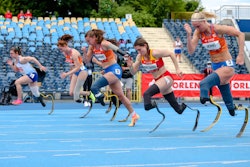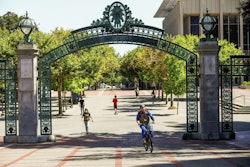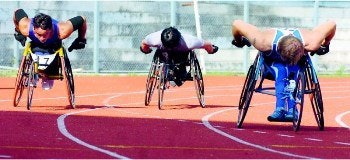 The Office of Civil Rights sent a “Dear Colleague” letter to every school in America that receives federal funding — from elementary school through college — reminding them of their legal obligation to provide opportunities for disabled athletes.
The Office of Civil Rights sent a “Dear Colleague” letter to every school in America that receives federal funding — from elementary school through college — reminding them of their legal obligation to provide opportunities for disabled athletes.A little over a year ago, the U.S. Department of Education issued policy guidelines that sparked a renewed thrust to create and expand opportunities for disabled athletes. Activists for the rights of the disabled applaud the directive as a game changer that will have the same impact for disabled athletes as Title IX did for women’s sports.
The department’s Office of Civil Rights sent a “Dear Colleague” letter to every school in America that receives federal funding — from elementary school through college — reminding them of their legal obligation to provide opportunities for disabled athletes.
“The ‘Dear Colleague’ letter was a necessary clarification,” says Anita Moorman, a University of Louisville professor of sports administration and recognized expert on disability rights. “It reminds schools of what the law requires and the process they must go through to help meet the needs of students with disabilities. Up until last year, there hadn’t been any guidance [coming from the Department of Education]. This was big. It was a long time coming, and it’s going to have a very positive impact.”
The rights of disabled athletes are enforceable under Section 504 of the Rehabilitation Act of 1973. Under the law, schools have two choices — allow disabled athletes to compete on existing sports teams or provide an equivalent offering in the form of adapted sports.
If schools fail to do either, student-athletes can file a complaint with the Office of Civil Rights (OCR) or pursue private litigation against the school. In previous cases at the high school level, some schools reached settlements with OCR, some settled with private legal counsel, while others chose to take their cases to court. It appears that many schools now are more proactive in trying to understand their obligations, rather than waiting to receive a complaint.
In order for disabled athletes to participate in mainstream sports, schools are required to make “reasonable modifications” as long as those modifications don’t fundamentally change the sport. Some examples are, in the case of a one-handed swimmer, schools can waive the rule that requires all swimmers to touch the wall with both hands. In track, they can allow a hearing-impaired sprinter to have a visual cue that would be used in conjunction with the starter’s pistol.
The Bottom Line
Derek Brown, who coaches three adapted sports teams at the University of Arizona, prefers to take a wait-and-see approach about how effective the guidelines will be. Brown doesn’t feel that the directive goes far enough to ensure that schools will be compelled to make the necessary changes.
“Part of me is optimistic that this directive will open some doors,” says Brown, who coaches men’s wheelchair basketball, wheelchair track and handcycling. “There’s also a part of me that is pessimistic. Hopefully, this directive becomes a mandate so that schools know they must do certain things, but there is another major issue here, and that’s money. The schools will either not have enough for their bottom line, or they will not want to share that revenue, and that’s going to cause conflict. Until [athletic departments] are given a mandate and told that they have to share, they probably won’t.”
Some view the Education Department’s guidelines as a definitive starting point in the resurgent movement to help disabled athletes get more opportunities. Chris Ruckdaschel, the National Collegiate Athletic Association (NCAA), associate director of inclusion, feels differently.
“The ‘Dear Colleague’ letter isn’t a starting point for us,” says Ruckdaschel. “The NCAA has a history of serving athletes with disabilities. However, the guidelines will certainly help shape our discussions as we move forward.”
The lack of equity for athletes in adapted sports is woefully obvious when making comparisons to their mainstream counterparts. It’s rare for any adapted sports program to be part of their school’s athletic department. Some are part of the Department of Disability Services, while others are connected to student affairs, campus recreation/intramurals or the academic departments.
That’s the overriding reason for the disparity in funding, which affects scholarships, facilities, athletic gear, media exposure, and, in some cases, the level of academic support for adapted-sports athletes. At major colleges, the athletic budget is typically in the eight-figure and nine-figure range. At the University of Alabama, for instance, the athletic budget was $124.8 million for fiscal year 2012. The Crimson Tide’s budget for adapted sports is $550,000 a year. There’s a similar disparity at the University of Arizona: athletic budget, $78 million; adapted sports, $200,000.
Brent Hardin, a professor and director of Alabama Disability Sports Program at the University of Alabama, uses a favorite example of how this works in a class that he teaches on the Tuscaloosa campus. Hardin is a former coach who guided the Crimson Tide to three national championships in wheelchair basketball.
“I believe that if you took the best-funded college wheelchair sports team in the country, and you had them switch places with the worst-funded NCAA basketball team in the country, the wheelchair team would think they had died and gone to heaven,” he says. “It would be like Christmas every day. The gap is really that wide right now. It’s like the [economic] gap between a Third World country and the United States.”
NCAA Studying Issues
To better address these issues at the college level, the NCAA has formed the Student-Athletes with Disabilities Subcommittee. Examining how the NCAA is currently addressing the needs of athletes who have physical or learning disabilities is one of the subcommittee’s prime tasks. Additionally, the subcommittee will focus on expanding opportunities for disabled athletes.
Proactive steps are being taken. Last fall, the NCAA sponsored a thinktank on athletes with disabilities. The session, held at its national headquarters in Indianapolis, attracted 40 attendees, which included disability experts and college administrators. After the thinktank event, the subcommittee met and came up with these steps to implement:
- Compile data on students with disabilities at NCAA schools, as well as data on disabled students who compete in sports. No one has an estimate of how many there are. Collecting precise data will present its share of challenges. Some students who have disabilities will report it and some won’t. Develop a glossary of disability-related terms to educate the NCAA membership. Since many NCAA schools are unfamiliar with issues concerning the disabled, a glossary will help as they formulate policies to enhance the college experience of the disabled athlete.
- Add ad hoc members to the subcommittee whose expertise in this field will provide a different perspective.
- Provide NCAA members with updates on major issues, educational resources and best practices as it relates to serving the best interests of the disabled athlete.
The subcommittee hopes to have a glossary of terms and definitions completed by late spring/early summer. As for data collection, the goal is to have that accessible in about a year.
“The thinktank was extremely educational for everybody involved,” says Carmen Leeds, the subcommittee’s chairperson and the senior associate athletics director for internal operations at Emporia State University in Kansas. “At this point, we’re in the discovery and education mode. We’re in the process of determining the best methods to get the most accurate data that will help us as we move forward.”
Expanding Sports Options
In looking at which sports should be included in a school’s regular athletics menu, track and field is the likely first choice. No rules changes would be needed, and it would involve minimal cost. In track and field, wheelchair athletes can compete in all events except the hurdles, steeplechase and the jumping events (long jump, high jump, triple jump and pole vault).
“In track and field, adding wheelchair events is a simple and straightforward process,” says Moorman. “It’s the same with a lot of individual sports such as swimming, tennis and golf. The NCAA should take an active role in encouraging its members to integrate these sports where appropriate.”
The next most likely addition would be wheelchair basketball, a sport that has been around since the late 1940s. The wheelchair game has cultivated much interest in other countries. The elite-level college wheelchair teams have top American athletes who have competed in the Paralympics for the USA, as well as foreign students who compete for their national teams in global competition.
“The next area is to look at is adapted sports and, in this case, adding wheelchair basketball is a no-brainer,” Moorman adds. “There are already a dozen universities participating. It will require some rules adaptations, but it’s a sport that’s really developed in its own silo.”
The formation of the NCAA subcommittee is welcomed by those who are heavily involved with disabled athletes. While they recognize how much progress has been made so far, they all acknowledge that there’s so much more to be done. One message that rings clear is the need for the NCAA to sanction adapted sports, but there’s also the never-ending concern about funding. Even though major college football and basketball teams bring in millions, most schools are struggling to stay out of the red.
“If there were incentives created for athletes with disabilities like there are for female athletes with Title IX, then the athletic departments will get interested,” says Hardin. “If there’s a way to add disabled athletes without taking away from those Title IX numbers that would be a great help. Maybe there’s a way to cycle back some of the money the NCAA makes off television contracts. If we can find a way to help programs do the right thing, I think we would see some movement in that area.”
Aside from their impairments, disabled athletes have said they want to be accepted for what they do in their sport of choice, just like any other athlete.
Students Eager for Changes
Christina Young is a freshman at the University of Illinois who plays on the school’s highly acclaimed women’s wheelchair basketball team. Young looks forward to the day when her team plays its home games in the same arena as the school’s other basketball teams.
“I can see a day when wheelchair basketball has its own Final Four with a national championship at the end,” she says. “Our game is competitive, and it’s enjoyable to watch. We work just as hard as the other athletes.”
Dalton Herendeen is an amputee who competes on the University of Indianapolis swim team. Herendeen, a junior, began swimming as a nine-year-old and was fast enough to make the finals in the 500-yard freestyle at the state high school swim championships in Indiana. The 2012 Paralympian has set his sights on making another U.S. team for the 2016 Paralympic Games in Rio de Janeiro.
“I always wanted the opportunity to prove that I can compete with the best of the other swimmers,” says Herendeen.
Enhanced training regimens help athletes improve their performance level. Herendeen believes athletes with disabilities should also have access to better training methods. To accomplish that, he would like to see a database established of training techniques that coaches can use to help disabled athletes reach their full potential. Other than a U.S. Paralympics channel on YouTube that has a small library of training videos, primarily about wheelchair sports, nothing like that is available now, he says.
“It’s not like you can Google it and get the information,” Herendeen says. “Right now, there’s not anything like that out there.”
![Screenshot 2024 06 05 141719[91541]](https://img.diverseeducation.com/files/base/diverse/all/image/2024/06/Screenshot_2024_06_05_141719_91541_.66613a2803b85.png?auto=format%2Ccompress&fit=crop&h=107&q=70&w=160)

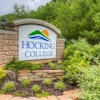
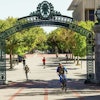

![Screenshot 2024 06 05 141719[91541]](https://img.diverseeducation.com/files/base/diverse/all/image/2024/06/Screenshot_2024_06_05_141719_91541_.66613a2803b85.png?auto=format%2Ccompress&fit=crop&h=167&q=70&w=250)
